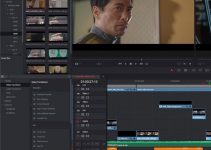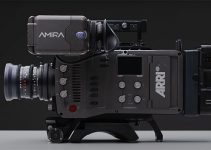The prices of the hardware components that you will need to build an editing workstation that can handle 4K Raw video editing flawlessly are constantly dropping these days as it becomes a lot cheaper and way more affordable to build a powerful PC than ever before.
The custom built workstation showcased by US-based filmmaker and DP Tom Antos in the video below not only supports the above statement but also reveals how you can easily build a 4K Raw video editing computer without emptying your bank account. So, without further ado, let’s explore the entire assembling process from start to finish along with the potential troubleshooting along the line.
Keep in mind, though, that building a PC from scratch this way could be a bit daunting on some occasions, especially if you don’t have the right skillset and prior technical experience in that area. That’s why it’s essential to take certain precautions such as using an ESD (electro-static discharge) dissipating wrist strap to avoid potential component damages due to static buildup and discharge. It’s also important to do a proper cable management and triple check all the connections once you install all of the components and align them properly in the main case.
On this particular occasion, Tom has stumbled upon some RAM incompatibility issues, which forced him to swap not only the RAM modules and purchase another kit but also was forced to replace the motherboard as well. To avoid all those issues, it’s highly recommended to consult with an IT specialist when purchasing the specific parts who will help you to eliminate the trial and error stage of the assembling process. Having all that in mind, here are all the components Tom have ended up with after building his brand new 4K Raw Video Editing PC workstation.
- Intel i7-6800K Processor (B&H, Amazon)
- Nvidia GeForce GTX 1070 (EVGA version) (B&H, Amazon) or Nvidia GeForce GTX 1070 (Asus version) (B&H, Amazon)
- Motherboard – ASUS X99-A/USB 3.1 LGA 2011 (B&H, Amazon)
- Memory G.SKILL Ripjaws 4 Series 32GB (Amazon)
- SanDisk Ultra II 960GB SATA III SSD (B&H, Amazon)
- SSD SATA Power Splitter Cables (Amazon)
- Samsung 950 PRO 512GB PCIe NVMe – M.2 Internal SSD (B&H, Amazon)
- Power Supply EVGA SuperNOVA 1000W G2 Series (B&H, Amazon)/EVGA SuperNOVA 750W G2 Series (B&H, Amazon)
- CPU Cooler – Corsair Hydro H110i GTX 280mm (B&H, Amazon)
- Case NZXT PHANTOM 630 (B&H, Amazon)
- Rosewill USB 3.0 internal card reader (Amazon)
- Vantec USB 3.0 internal card reader (Amazon)
- StarTech 5.25″ to 3.5″ bay bracket (B&H, Amazon)
- Lexar CFast 2.0 USB 3.0 Reader (B&H, Amazon)
- Windows 10 Home (64-bit) (B&H, Amazon)
All in all, this is indeed a powerful video editing PC that apparently can handle not only URSA Mini 4.6 Raw cinemaDNG files with ease but also play back them flawlessly and smoothly in real-time as we can see at the end of the video above. So, if you have similar requirements you can use this workstation as a reference or build another custom PC from the ground up.
Either way, you have countless possibilities and multiple configurations as an option so find the most suitable components that perfectly fit your personal needs and always consult with a technical advisor before commencing the assembling process to avoid further complications and potential component incompatibilities.
[source: Tom Antos Films]
Disclaimer: As an Amazon Associate partner and participant in B&H and Adorama Affiliate programmes, we earn a small comission from each purchase made through the affiliate links listed above at no additional cost to you.





Have watched several of your videos and have enjoyed. This is the best commercial I have seen in a while to buy a new iMac and use FCPX.
Not if you want to edit 4k video efficiently haha. Even 1080p video you’d be better off with a high quality pc with a great dedicated graphics card and premiere pro.
I would not rely solely on SSD’s for a desktop workstation. It’s not much more to include a 3TB hard disk with a 1TB boot partition and a 2TB long-term storage partition. Clone your 1TB boot SSD to the HD 1TB partition and set up the BIOS to boot first from the SSD, then second to the HD. If (i.e. when,,,) the SSD fails to boot, the workstation will automatically boot from the HD.
Would this hardware setup be compatible to use it as a hackintosh?